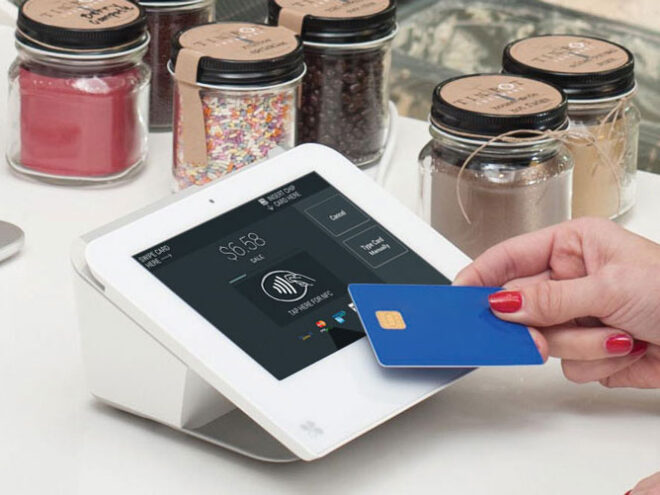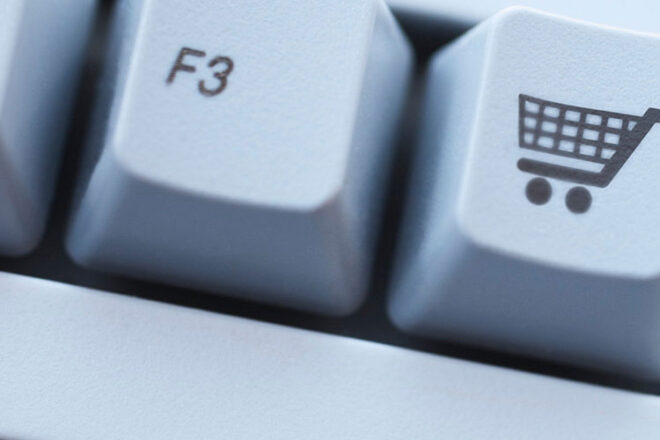Why is contactless payment good for small businesses? Here are 5 myths debunked.
Editorial Team
5 min read
Many businesses added contactless payments to their payment options during the pandemic, aiming to reduce contact between customers and employees during a difficult period. Despite this trend, 41% of small businesses still don’t offer cashless payments, and 16% say they will never make the shift to any digital payment options including contactless, according to a 2022 survey from Visa.
There are many, many good reasons to start using contactless payments if you haven’t already – and doing so is much easier than you might think. Most Clover hardware supports this functionality without the need to turn anything on. Contactless payments are a fast, more secure, and hygienic way to make purchases with a debit or credit card, or a mobile wallet such as Apple Pay® and Google Pay™. In this guide, we’ll break down some of the myths around contactless payments to demonstrate the benefits of adding this experience to your business.
Myth 1: Contactless payments are less secure
Some people are under the impression that contactless payments are easier to hack. In reality, it’s easier to steal a customer’s physical card than to hack into a contactless payment method.
Contactless payment transactions rely on near-field communication (NFC) technology to establish a wireless link between a point-of-sale (POS) device and a user’s credit card, debit card, smartphone, or wearable device. When it’s time to initiate a transaction at the checkout counter, customers simply wave their card or payment device across an NFC reader to complete the sale.
Contactless transactions require the use of EMV cards, which contain an embedded security chip that’s virtually impossible to clone. Even devices used for contactless payments are more difficult to hack than a magstripe credit card. Paying using a smartphone or smartwatch requires several things:
- The smartphone or device will prompt user to authenticate themselves to unlock the device
- The correct mobile payment app is installed and configured open
- The phone or device is held within two inches of the terminal
While it’s true that applications exist that a hacker could use to read some information from a contactless card, much of this information is securely encrypted – which imposes limits on what information the thief could obtain.
Myth 2: You need to buy expensive new equipment to accept contactless payments
It’s very possible that your existing point of sale (POS) system is already equipped to begin accepting contactless payments. Card readers that accept chip cards are likely able to accept contactless payments, too. Look for the contactless icon—four curved lines that increase in size from left to right—to confirm that it can accept contactless payments.
Clover devices are already set up to allow you to accept contactless payments; merchants just need to understand the steps in how customers pay this way. Check out section #4 in our post Ultimate checklist: What you need to know to start taking payments for your business to familiarize yourself. It’s quite straightforward.
Myth 3: Customers prefer traditional payment
Fact is, the customer controls how they choose to pay. Merchants don’t need to change how they’re accepting payments at all or force a customer into a particular payment type. Rather, it’s all about expanding payment options so that customers can pay however they wish: cash, tap, dip or swipe. Customers who prefer traditional payment types can absolutely continue using them.
In 2021, over 80% of US consumers used contactless payments, a strong indication that what began as a reaction to the pandemic is now the preferred way to pay. Consumers are, quite literally, asking for contactless payment options from merchants who don’t yet offer them. It’s even possible that your company could be less competitive if you aren’t offering customers the payment options they find most convenient.
Myth 4: Contactless payments are more expensive for the merchant
Research from Forrester found that 67% of retailers fear their processing fees will go up if they begin accepting contactless payments. But actually, there are usually no additional costs associated with contactless transactions versus traditional credit card payments.
“Banks charge merchants a fee averaging about 2.5% when a credit card is used to make a purchase in-person, and the fee is the same regardless of whether the card is inserted, tapped/waved, or used via a mobile device,” wrote the National Retail Federation.
With Clover, merchants pay the same low rates for all cards, including American Express and rewards cards, whether a customer swipes the card through a strip or uses a contactless payment option.
Myth 5: Contactless payments increases the risk of identity theft
Finally, many merchants fear that contactless payments can put their customers at risk of identity theft. Skimming or cloning a card leads to someone gaining access to your customer’s data, right?
Actually, identity theft is not the same as payment card fraud. Identity theft takes place when a criminal assumes someone else’s identity, using data like their birthdate, Social Security number, and full name. Contactless cards don’t store those types of personally identifying information.
As noted earlier, it’s still extremely difficult for thieves to commit payment card fraud using contactless payments. The EMV technology used to make contactless payments is virtually impossible to clone, making EMV cards far less vulnerable to fraud.
Ultimately, the security, convenience, and ease of contactless payments make a strong case for adopting this payment experience at your business. There are many myths and misconceptions surrounding contactless payments, but the customer demand and security benefits should incentivize adding this capability to your checkout process.
To learn more about accepting contactless payments at your business, contact a Clover Business Consultant today.
CONTACT SALESRelated Posts
Contactless Payments
Payment gateway vs. shopping cart
Popular Topics
Stay In Touch
Sign up and learn more about Clover.
Thank you for your subscription!
Recent Stories
- Jewelry store supplies and equipment needed for opening day
- How small businesses can use employee discounts to retain staff
- Tips and tricks for opening an outdoor pop-up restaurant
Please share your contact information
to access our premium content.
Thank you for sharing your contact information.
Download Now





